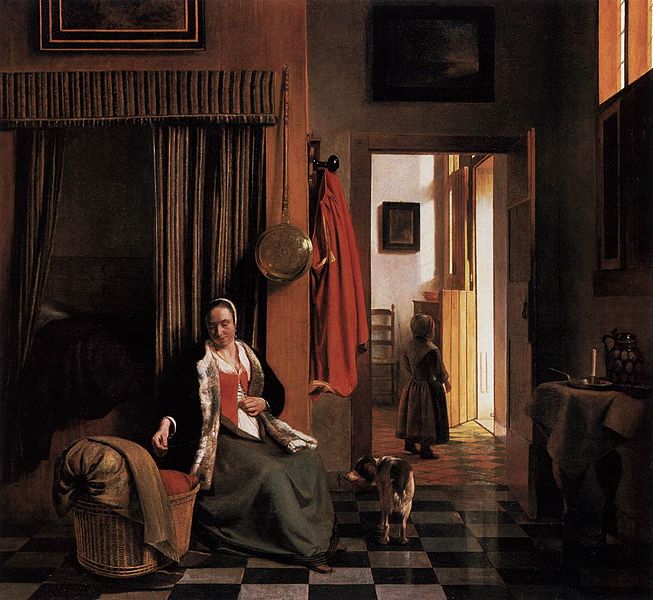Heedless of
her mother’s gentle call the little girl stares outside, into the very far her
gaping eyes can perceive. Always when a door is blown ajar by some intractable
wind the little girl will rush towards it in excitement, but stands stationary
before the threshold as if awestruck by something wondrous or foreign to her
yet unspoiled mind. And the sun will flood in, shafts of them will penetrate
her tender heart like swords. Blinded by such gilded haziness the little girl
forgets to moan. Nor does the mother, kept busy rocking a restless baby, notice
the Lights are creeping into the house like troops in encroachment. The little
girl is no sooner aflame as Deities are within her.
This
painting is a typical example amongst Pieter de Hooch’s oeuvre- like the most
characteristic of Vermeer’s, the depth of space is enhanced by the division of
the room, and always there is an opened door that leads to the unknown. The
focal point should be on the mother but our eyes are trained to follow the
curious- in this case it is the little girl, on the point of walking calmly
into a perilous adventure, with sunlight enveloping her ominously, as what
often admonished in various cautionary tales, that the most beguiling is always
the most dangerous.
Why do we
always want to chase after the most glorious? Is it merely because of vanity?
Or the mirage of the eternal happiness? Outside of her snugly home is a world
enmeshed with evil and dangers. The little girl is well aware of that, as her
ears are already burnt with the lurid tales of how the world is consisted of
forests of thorns. But every time she stands before the gateway opened to a
view that is so impregnated with Lights, nothing but Lights, that any
precaution of potential harms dissipates.
The mother
hums a lullaby as the final means of appeasement to the growingly silent baby.
Labyrinthine melodies with refrains like the most monotonous chant, the lullaby
is an invisible force that spurs the little girl onto her own adventure. Just
go, run, leave your old home, the music seems to tell her. But first of all she
needs to be divested of all Deities reside within her. The golden light gently
surges out of her bosom to mingle willingly with the blinding light of the
world. And a fox straggles furtively in the wake of the hesitant little girl,
ready to give advice.

Comments
Post a Comment